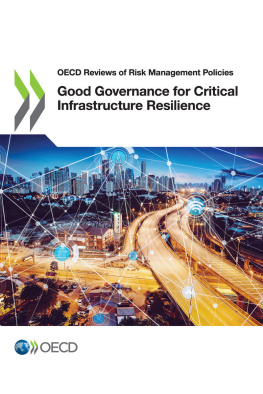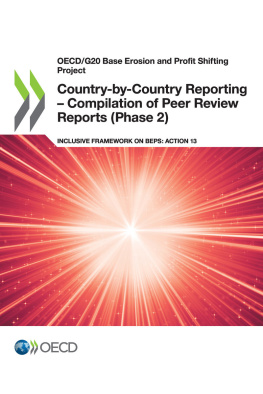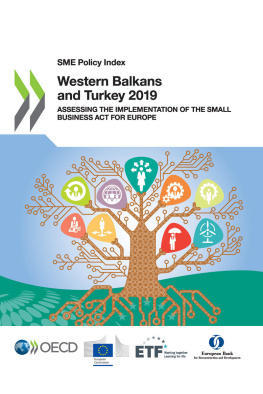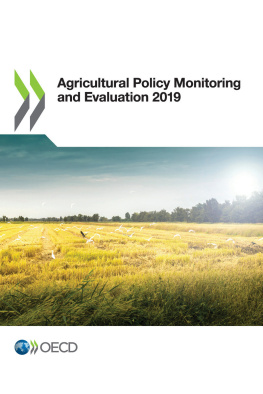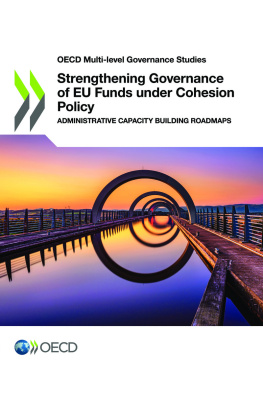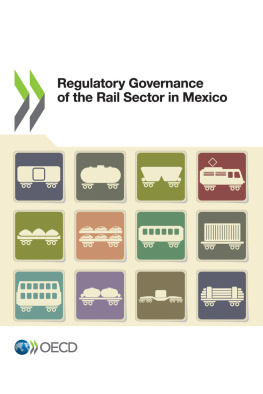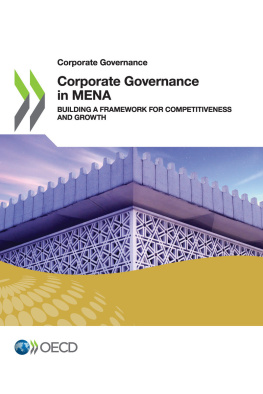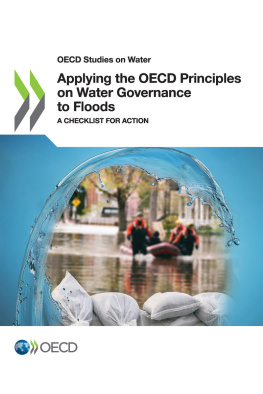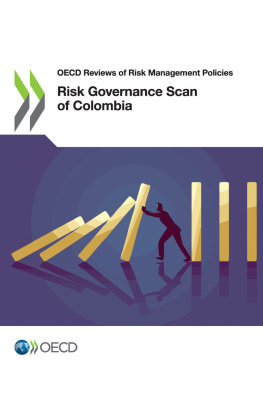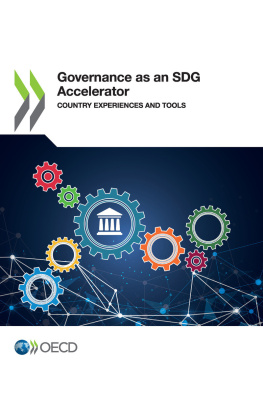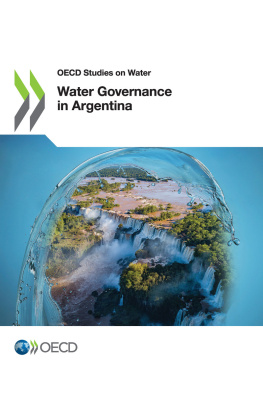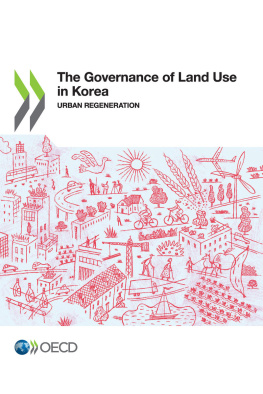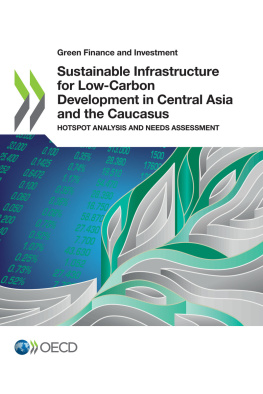OECD - Good Governance for Critical Infrastructure Resilience
Here you can read online OECD - Good Governance for Critical Infrastructure Resilience full text of the book (entire story) in english for free. Download pdf and epub, get meaning, cover and reviews about this ebook. year: 2019, publisher: OECD Publishing, genre: Politics. Description of the work, (preface) as well as reviews are available. Best literature library LitArk.com created for fans of good reading and offers a wide selection of genres:
Romance novel
Science fiction
Adventure
Detective
Science
History
Home and family
Prose
Art
Politics
Computer
Non-fiction
Religion
Business
Children
Humor
Choose a favorite category and find really read worthwhile books. Enjoy immersion in the world of imagination, feel the emotions of the characters or learn something new for yourself, make an fascinating discovery.
Good Governance for Critical Infrastructure Resilience: summary, description and annotation
We offer to read an annotation, description, summary or preface (depends on what the author of the book "Good Governance for Critical Infrastructure Resilience" wrote himself). If you haven't found the necessary information about the book — write in the comments, we will try to find it.
OECD: author's other books
Who wrote Good Governance for Critical Infrastructure Resilience? Find out the surname, the name of the author of the book and a list of all author's works by series.
Good Governance for Critical Infrastructure Resilience — read online for free the complete book (whole text) full work
Below is the text of the book, divided by pages. System saving the place of the last page read, allows you to conveniently read the book "Good Governance for Critical Infrastructure Resilience" online for free, without having to search again every time where you left off. Put a bookmark, and you can go to the page where you finished reading at any time.
Font size:
Interval:
Bookmark:
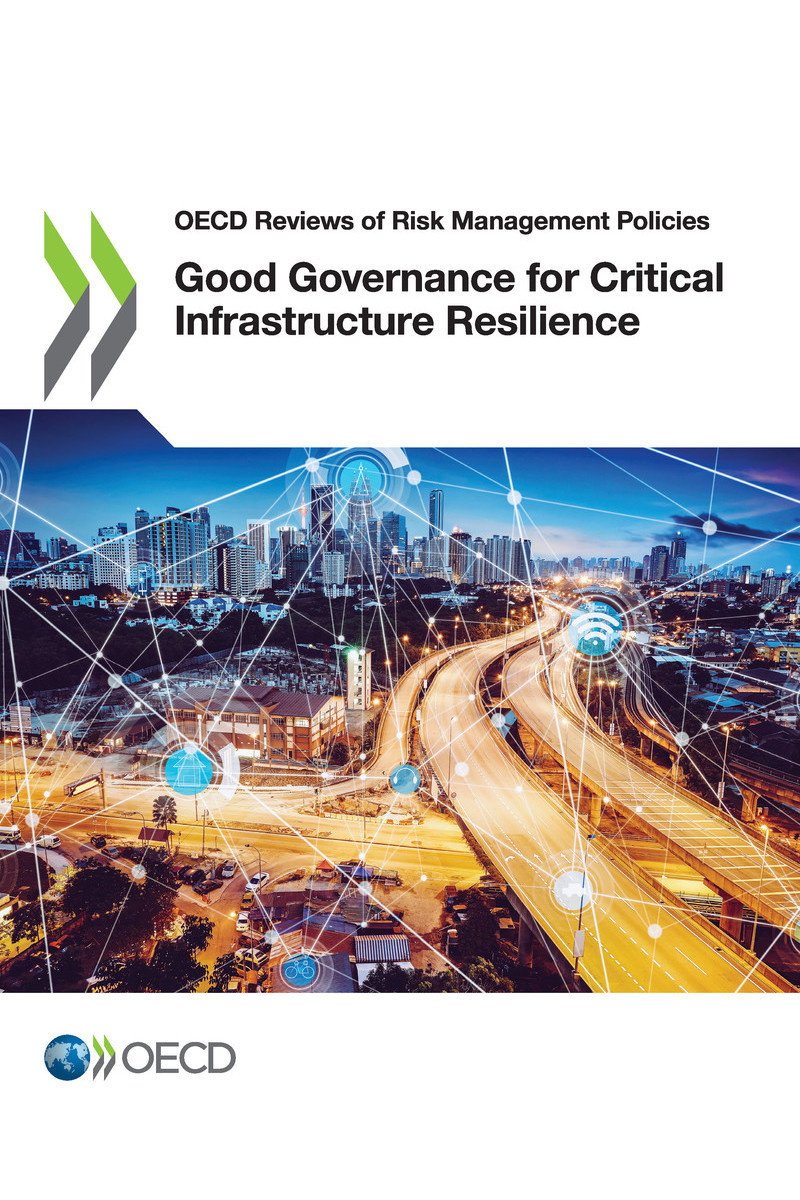
OECD (2019), Good Governance for Critical Infrastructure Resilience , OECD Reviews of Risk Management Policies, OECD Publishing, Paris, https://doi.org/10.1787/02f0e5a0-en .
Natural hazards and malicious attacks against critical infrastructure pose grave risks to societies and economies. Recent shock events such as the Great East Japan Earthquake, Hurricane Harvey in the United States, the cyber-attacks on the Ukrainian electricity grid or the Genoa bridge collapse in Italy show how disruptions to critical infrastructure and essential services can result in substantial economic damage as well as loss of life. The interconnectedness of supply chains and technological and financial systems in the global economy increase the exposure and vulnerability of critical infrastructure. When shocks and disruptions occur, their negative impacts can cut cross sectors and borders, and even resonate globally.
At the same time, the global increase in infrastructure investment and the digital transformation of infrastructure services provide opportunities to rethink critical infrastructure resilience. This report takes stock of the changing contexts for boosting resilience across OECD countries, and discusses the policy options and governance models that favour upfront investment in resilience.
Based on a cross-country survey, it analyses the progressive shift of critical infrastructure policies from asset protection to system resilience. Rather than focusing on asset protection alone, a system approach allows governments and infrastructure operators to address asset interdependencies and prioritise resilience measures for critical hubs and nodes whose failure would cause the most damage.
The report also includes a case study on Finlands electricity supply that illustrates how governments can build partnerships with critical infrastructure operators to share information and set objectives, strengthening both trust and resilience.
Finally, a Policy Toolkit for Governance of Critical Infrastructure Resilience identifies important steps in designing an appropriate governance model for todays critical infrastructure resilience challenges. This Toolkit complements the OECD Recommendation on the Governance of Critical Risks, contributes to international discussions in the G20 on quality infrastructure, and supports the implementation of the Sendai Framework for Disaster Risk Reduction.
The Toolkit is designed to support governments efforts to renew critical infrastructure policies. Going forward, the OECD will work with governments to develop benchmark indicators and conduct case studies to compare progress and improve cross-country learning in this crucial area.
This report was prepared under the auspices of the OECD High Level risk Forum by the OECD Public Governance Directorate, led by Marcos Bonturi.
The report presents the results of the work of the OECD High-Level Risk Forum to strengthen the resilience of critical infrastructure through improved governance. This report was co-ordinated and written by Charles Baubion, under the guidance of Jack Radisch and Stphane Jacobzone. Chapters 1 to 3 build on the Policy Evaluation Framework on the Governance of Critical Infrastructure Resilience, developed by Mary Kate Fisher and Catherine Gamper, as part of a project that the OECD jointly conducted with the Inter-American Development Bank. Ariadna Anisimov conducted the analysis of the OECD cross-country survey on critical infrastructure resilience and provided valuable research assistance throughout the project, especially for the case study on electricity transmission and distribution in Finland. Teresa Maria Deubelli and John Roche contributed to the project with their insights and feedbacks. Raquel Paraqueno prepared the report for publication. The team is very grateful for assistance provided by Elisabeth Huggard throughout the project.
The Secretariat acknowledges contributions from the High-Level Risk Forum delegates who responded to the OECD Survey, and specifically from the following colleagues for their appreciated feedbacks and comments: Ryan Schwartz and Trent Abbott (Canada), Tiphaine Beaussant (France), Kathrin Stolzenburg (Germany), Georgios Giannopoulos and Maciej Kuszynski (European Commission), Christian Fjder and Mikko Vh-Sipil (Finland), Daigo Ota (Japan), Piotr Szufnara (Poland) Stefan Brem (Switzerland), and Elizabeth Lozey and Susan Stevens (United States). Duane Verner (Argonne National Laboratory), Marie-Valentine Florin (International Risk Governance Council), Richard Smith-Bingham (Marsh and McLennan Companies), and Elisa Gastaldi (Siemens) provided complementary perspectives from research and the private sectors.
Comments and feedback received from OECD colleagues Laurent Bernat, Lisa Danielson, Michael Mullan, and Leigh Wolfrom, as well as Nuclear Energy Agency colleague Olvido Guzman, helped integrate complementary perspectives in the analysis.
The report benefited from discussions held at the Workshop on System-Thinking for Critical Infrastructure Resilience and Security, jointly organised by the OECD and the European Commission Joint Research Centre (JRC) in September 2018. Special thanks go to the speakers and experts involved for their valuable insights, and to the JRC for its support in organising this event.
The financial support received from the Finland National Emergency Supply Agency (NESA) was instrumental for conducting the Finland case study and is gratefully acknowledge by the OECD, as is the contribution of the Inter-American Development Bank for the preliminary analysis.
Font size:
Interval:
Bookmark:
Similar books «Good Governance for Critical Infrastructure Resilience»
Look at similar books to Good Governance for Critical Infrastructure Resilience. We have selected literature similar in name and meaning in the hope of providing readers with more options to find new, interesting, not yet read works.
Discussion, reviews of the book Good Governance for Critical Infrastructure Resilience and just readers' own opinions. Leave your comments, write what you think about the work, its meaning or the main characters. Specify what exactly you liked and what you didn't like, and why you think so.

